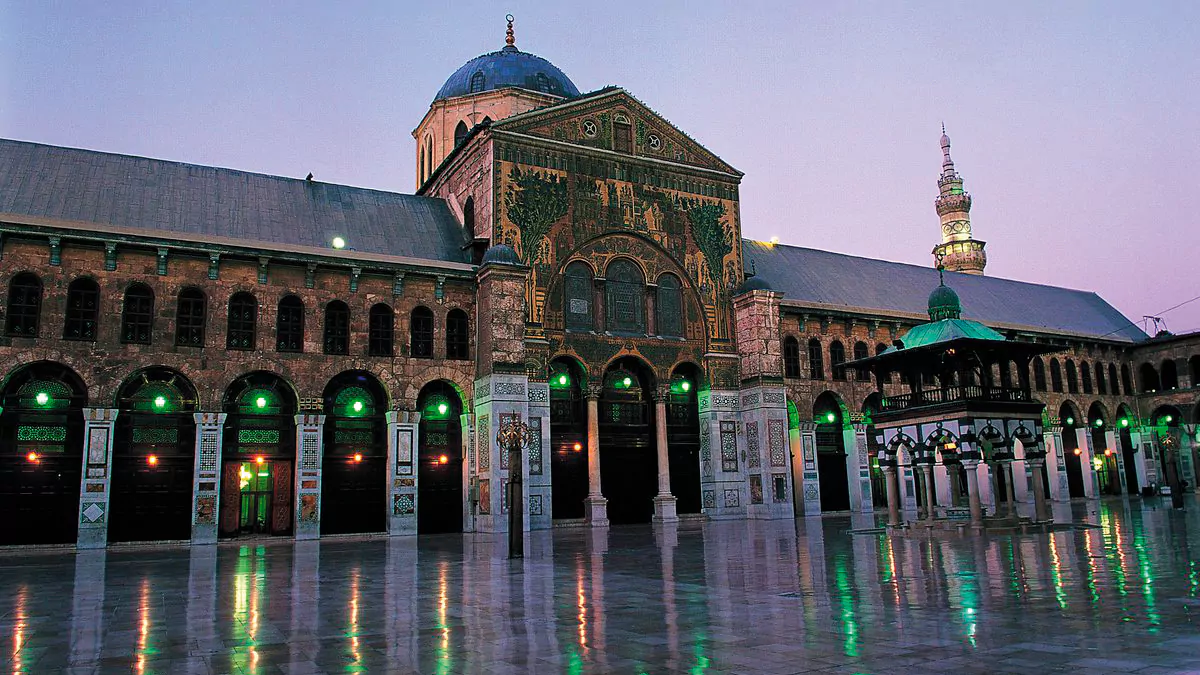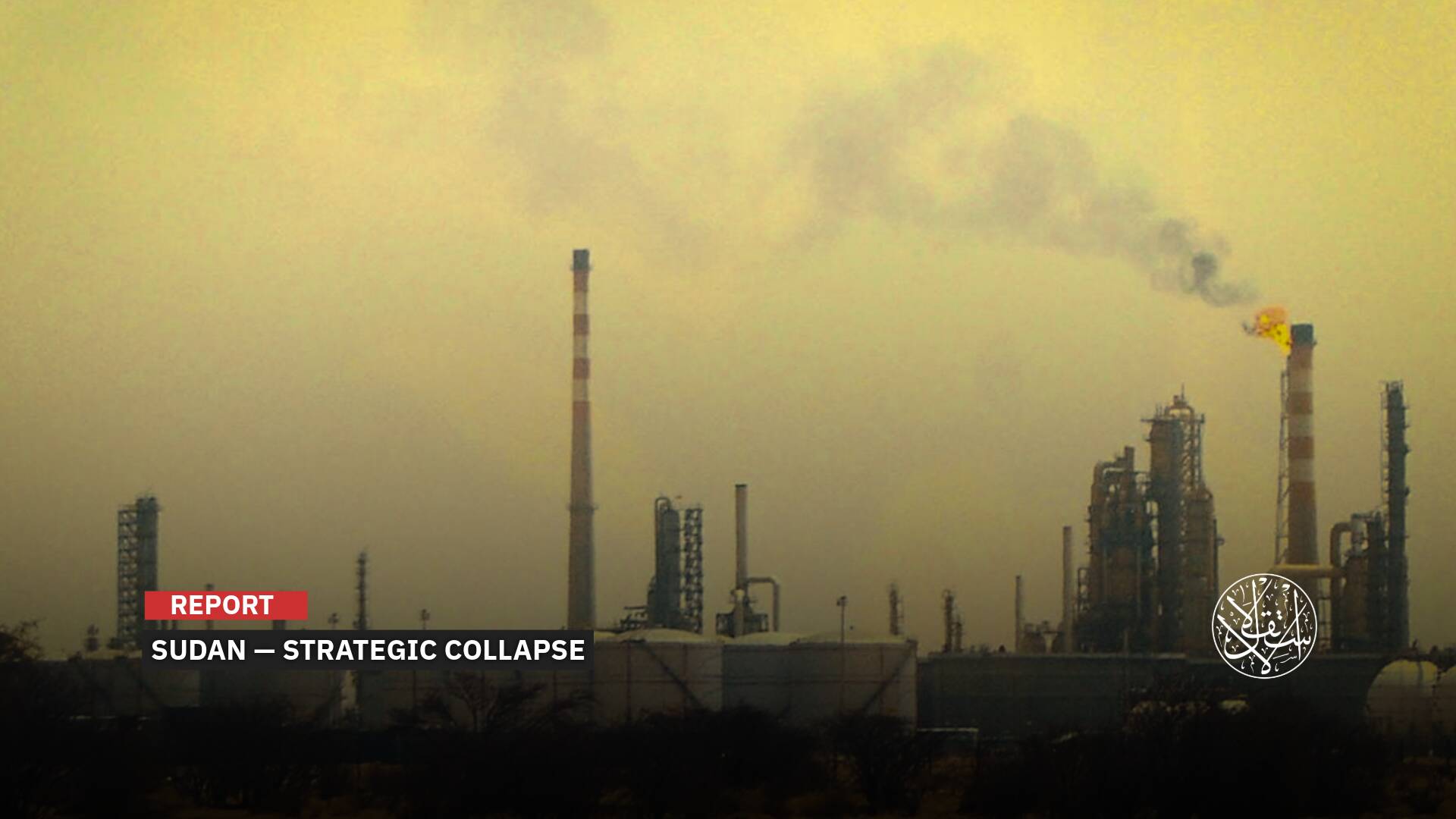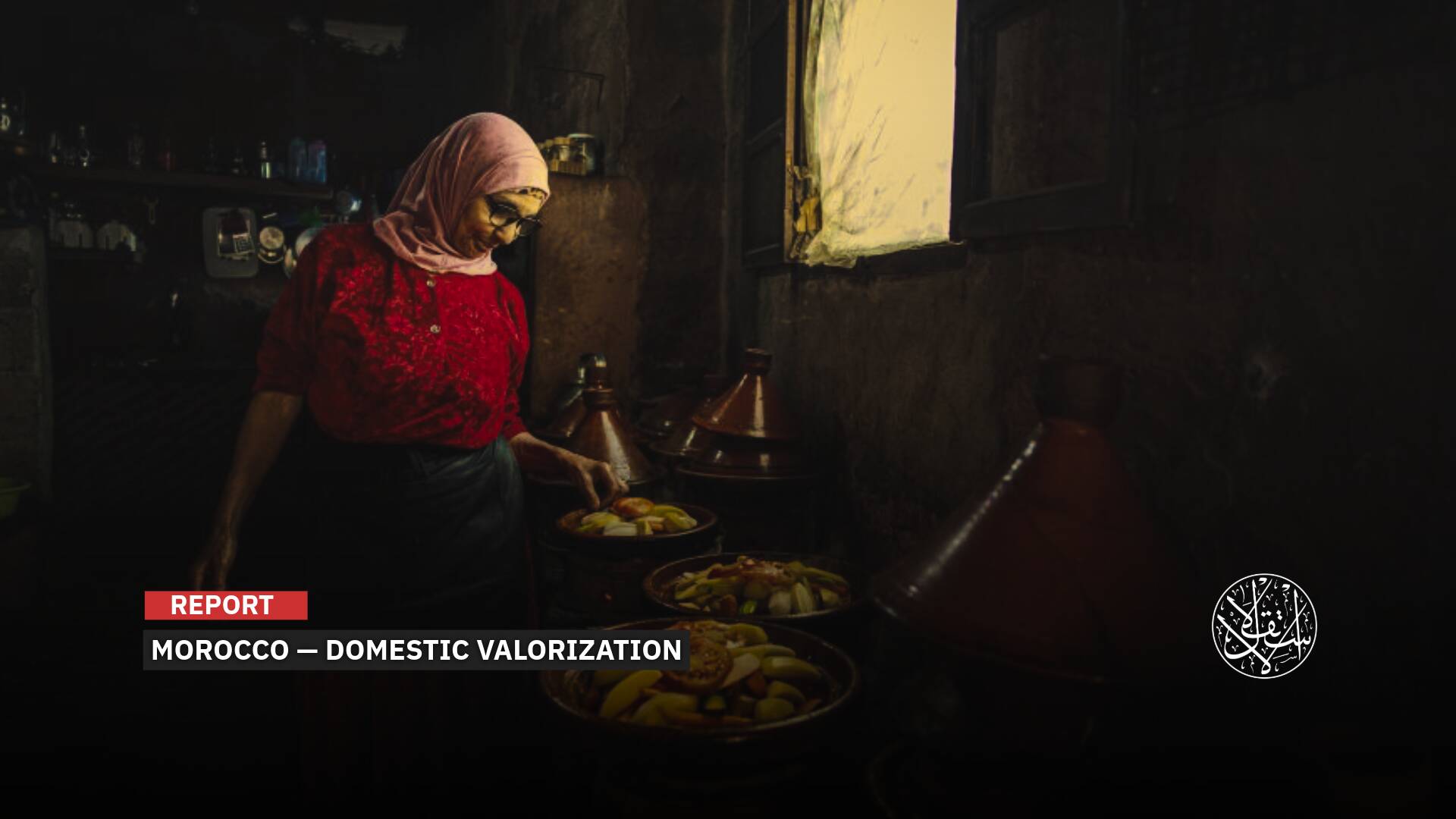Umayyad Mosque in Damascus: A Historic Symbol Witnessing Shifts in Power and Revolution

Hafez al-Assad's name was chiseled off the mosque's marble plaque, marking the end of a dark era.
The entry of Syrian revolutionary forces into the Umayyad Mosque in Damascus, followed by the first call to prayer, marked a powerful symbol of a new era—one that sealed the end of the Assad family's rule for good.
On December 8, 2024, a pivotal moment in Syria’s history unfolded as armed revolution forces entered and took control of Damascus, ending 61 years of Ba'ath Party rule and 53 years of Assad family dominance.
First Friday!
The first images from Damascus were of the call to prayer echoing through the grand Umayyad Mosque, now liberated from the grip of the fallen regime.
On that day, military operations commander Ahmad al-Shara entered the capital, making his way through its streets to the Umayyad Mosque.
From there, he delivered a powerful message, underscoring the mosque’s symbolic importance to Syrians and Damascus’s significance to the Arab world.
In his first sermon, al-Shara condemned ousted President Bashar al-Assad for turning Syria into “a playground for Iran’s ambitions,” declaring that defeating him was a victory “for the entire Islamic nation.”
On December 12, 2024, the first Friday prayer was held at the Umayyad Mosque after the fall of Assad’s regime.
Tens of thousands of Syrians gathered for the prayer, led by interim Prime Minister Mohammed al-Bashir.
Local Syrian media estimated around 60,000 worshippers filled the mosque and surrounding courtyards.
In his sermon, al-Bashir spoke of the suffering endured by the Syrians, particularly in Damascus, and called for unity and solidarity as the country moved forward.
On the second Friday, December 20, the name of former regime leader Hafez al-Assad was hammered off the marble plaque on the mosque’s outer wall—a powerful act symbolizing the end of an era.
‘Shiite Husayniyah’
Historically, the first spark of the Syrian revolution ignited near the Umayyad Mosque in Damascus.
On March 15, 2011, the first demonstration organized by civil society activists took place in al-Hamidiyah Souq in central Damascus.
The protesters chanted slogans calling for freedom, including “God, Syria, Freedom, and that's it.” In response, security forces and intelligence agents swiftly attacked the protest, dispersing it and arresting several activists.
Following this, prayers at the Umayyad Mosque were banned for 13 years, including Friday and congregational prayers.
However, the mosque, which holds particular significance for Sunni Muslims, witnessed multiple violations at the hands of Shiite militias supporting the Assad regime.
One such incident occurred on February 13, 2015, when social media activists shared videos of a Hussayniyah set up by Shiites inside the Umayyad Mosque.
On that day, flags of Iran and Hezbollah were prominently displayed, with these two flags alone flying above the mosque's main entrance.
The event was marked by Zainabiyya and Hussainiyya chants and rituals, with crowds of Shiite followers from Syria, Iran, and Lebanon in attendance.
Participants were reported to have shouted insults at the companions of the Prophet as they left the Hamidiyah Souq and reached the mosque’s courtyard, as local and Arab media outlets previously reported.
Witnesses told al-Arabiya TV that these insults were made in the presence of regime clerics and mosque officials, some of whom were reportedly “listening, watching, and laughing.”

Years of Assad's Rule
Throughout Assad's long rule, the Umayyad Mosque witnessed neglect that led to the mismanagement and corruption of its ancient and priceless artifacts.
In 2009, Syrian journalist Ayman al-Shoufi published an investigation on the “theft of Persian carpets from the Umayyad Mosque and the Marjeh Clock.”
He reported that all of the mosque's old and valuable carpets, dating back to the early centuries of Islam, were replaced with new ones in 2004, with the originals disappearing.
Similarly, journalist Sami Marwan Moubayed raised the issue again in 2017 with an article in al-Watan newspaper titled “Damascus' Lost Treasures Turned into Memories in Books .. Priceless Manuscripts, Luxury Chandeliers, and the Rare Carpets of the Umayyad Mosque—What Happened to Them?”
In his article, which was sympathetic to the former regime, Moubayed revealed that 400 Ottoman manuscripts, stored in boxes in the mosque's muezzin room, were destroyed. He also mentioned that only one of the luxurious old chandeliers remained in the warehouse.
He simply questioned the fate of these invaluable treasures.
Meanwhile, Syrian journalist Ammar Alsamar spoke about a past exhibit during the opening of a museum dedicated to the Umayyad Mosque’s artifacts in 1989.
In a November 26, 2022 article for Syria TV, he shared that the museum housed a single hall featuring some priceless items, including gilded handwritten Qurans from the Mamluk period, decorated manuscripts, stones, carpets, Arabic calligraphy panels, lamps, mosaics, ceramics, glass pieces, Islamic coins, large clocks, and chandeliers.
He too questioned the fate of these treasures, asking, “Where are these priceless relics?” A question that still remains unanswered.

History of Umayyad Mosque
The Umayyad Mosque, built during the early years of the Islamic conquest of Damascus, holds great historical and symbolic significance for the capital’s residents, all Syrians, and Muslims worldwide.
There are various conflicting narratives of the mosque’s origins. One of the most famous is that the mosque was built on the site of an ancient pagan temple dedicated to “the god Jupiter,” which Emperor Theodosius transformed into a church in 379, known as the Church of Saint John.
When the noble companion Abu Ubayda ibn al-Jarrah entered Damascus, he outlined the mosque on part of the temple.
Upon the reign of the Umayyad caliph al-Walid ibn Abd al-Malik, he established the mosque on the site, combining the temple, the church, and the mosque.
Al-Walid gathered craftsmen and workers from Persia, India, and artists from Greece to build the mosque, which took 10 years to complete and was finished after his death.
The mosque has long been praised by scholars and poets of Islam, immortalized in their writings and verses.
The Andalusian traveler and poet Ibn Jubayr described the mosque as the most famous of Islamic mosques for its beauty, architectural perfection, and intricate craftsmanship.
The Syrian scholar and writer Ali al-Tantawi wrote, “The Umayyads may have lost their wealth and power, but the name of the Umayyads lives on, lasting longer than all the wealth and power they ever had.”
What sets the Umayyad Mosque apart from other mosques is its tradition of the “collective call to prayer” or “choir adhan,” where a group of muezzins simultaneously perform the call to prayer, ensuring its sound reaches the furthest distance possible.
Although loudspeakers were invented long ago, the mosque’s tradition continues with choirs performing the collective adhan in the mosque’s courtyard, making it a unique and historic tradition of the Umayyad Mosque.

Restoring Identity
Commenting on the symbolic significance of the Umayyad Mosque and its connection to the victory of the revolution, Syrian researcher Said Alamri believes that this scene will be immortalized in history.
“There are two scenes that history will remember in the Syrian revolution. The first was the storming of Sednaya prison and the liberation of detainees, symbolizing the fall of tyranny and the state of oppression. The second was the entry of revolutionaries and the Syrian people into the courtyards of the Umayyad Mosque, chanting and glorifying, which represented the recovery of their identity that had been stolen by the Assad family and sectarianism,” he told Al-Estiklal.
“The Umayyad Mosque was not just a place of worship; it was an intellectual and scientific center, gathering the great scholars and thinkers of the Sunni community from various fields.”
“Before the Ba'ath Party came to power, the mosque played a vital role in spreading Islamic sciences, literature, and jurisprudence. It stood as a witness to key historical moments in Syria's history, such as the Great Arab Revolt of 1916 for independence from the Ottoman Empire,” he added.
“However, with Hafez al-Assad's rise to power, the religious and social landscape in Syria changed drastically. His regime imposed strict control over all aspects of life, including religious institutions and places of worship.”
“The Umayyad Mosque wasn't spared, as the regime tightened its grip, suppressing sermons and religious activities with heavy surveillance, eventually banning them and arresting participants,” Alamri said.
The Syrian researcher recalled that during the years of repression and the decline of the revolution, the presence of Iranian Shiite militias in the Umayyad Mosque, holding Zainabiya [rituals] and mourning processions, was a profound insult to Syrians, particularly Sunnis.
“This was a political message, given the historical animosity between the Shi'a and the Umayyads, aimed at signaling their political and religious victory.”
“Now, the mosque has been restored to the Syrians, free of Assad's images and legacy. A new era dawns for the mosque, mirroring Syria’s fresh chapter—proving that oppression, no matter how enduring, is always fleeting,” he concluded.
Sources
- The Umayyad Mosque: The pride of Damascus and the gateway to its giving in the holy month [Arabic]
- Under the leadership of al-Bashir, The first Friday prayer in the Umayyad Mosque in 12 years [Arabic]
- The Assad Regime and History: The Fate of Manuscripts and Artifacts of the Umayyad Mosque in Damascus [Arabic]
- Video: Shiite Husseiniya inside the Umayyad Mosque [Arabic]
- What are al-Sharaa messages after his visit to the Umayyad Mosque and how did his personality change? [Arabic]










